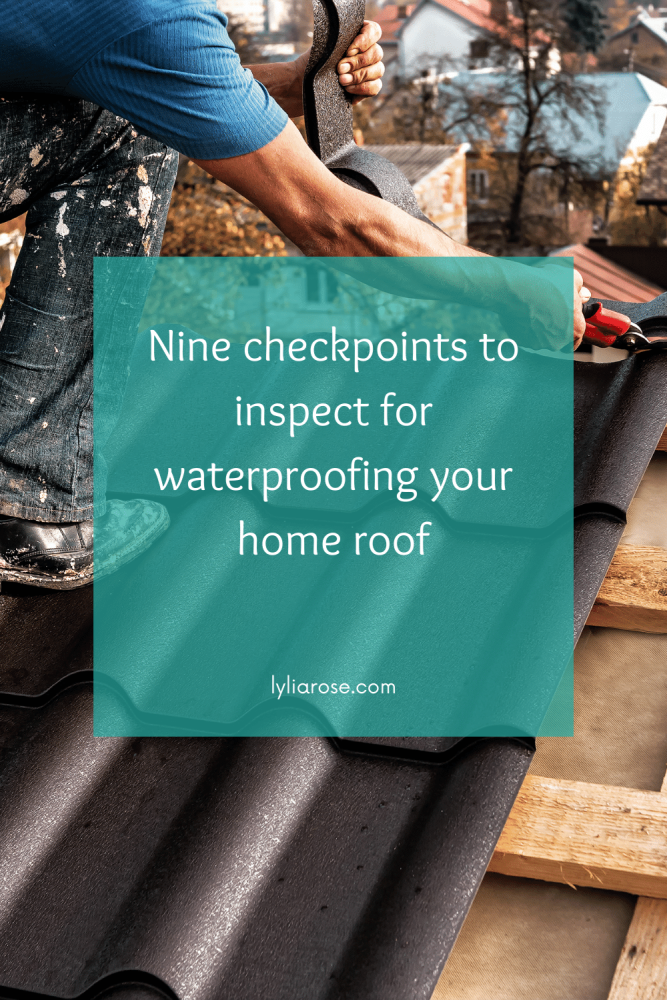Nine checkpoints to inspect for waterproofing your home roof
Posted on
The end of summer brings a change in the weather, and to homeowners that presents the perfect opportunity to begin maintenance work before winter takes hold. Owning a property presents a wonderful opportunity to enjoy a stable homelife and some outdoor space, and occasional maintenance is necessary to ensure that it remains in peak condition.

Failure to fix leaks in the roof can lead to many issues downstream, including the obvious, water ingress leading to damage to the structures, and the less obvious – wildlife making its way into your roof and setting up home there! Here we explore nine areas to check for water damage, and what to look out for.
Parapet walls:
Look out for gaps in the brickwork, which can allow water to get into the roof. You can also look for differences between the height of the parapet wall and lower walls to understand the extent of damage, as well as observe any possible structural deviation caused by water penetration. Walls on the east will often show greater damage.
Coping stones:
Look for signs of damage in the cross and bed joints. These should remain sealed with cement, and if they’re not, this may cause problems. Your cross joints may have caulking on top of the cement, which is there to prevent water ingress and add flexibility from movement. Check the caulking for visible damage. In the case of clay stones there are also the possibility of the stones themselves becoming porous and letting in water directly – look out for green moss or mildew which has taken root in the clay.
Bulkheads:
Including elevator, stairway, and incinerator bulkheads. These tend to protrude out from the roof and therefore become more vulnerable to moisture. Their height also makes them more likely to be exposed to bad weather. Check around the bulkhead joints for signs of damage – this area will usually have flashing as a sealant which can become displaced or deteriorate in poor weather. It’s worth checking the exterior and interior brickwork where possible as structural problems caused by moisture can be hidden internally.
Flashing:
This metal sealant is sometimes copper on older buildings, and sadly this has made it vulnerable to thieves over the years due to the increasing value of the metal. It’s worth checking to ensure you still have yours intact. If you didn’t have copper, it’s still worth checking the flashing for any damage like dry rot, which may render it ineffective.
Chimneys:
Like the bulkheads, these are another area where water can affect the joints in the roof. It’s worth noting that because chimneys tend to be the highest point on many roofs, they tend to be subject to the worst of the weather. Check the top few feet of your chimney for damage like loose brickwork, as well as the chimney caps. Chimneys are also often neglected for inspection internally, but often an internal inspection can reveal problems that are not immediately visible on the outside. It’s worth checking for such damage and repairing it, as the cost will be significantly less than replacing the chimney.
Roofing:
Checking the roof is actually fairly simple, as large defects, rot, or uneven surfaces are easy to spot, and movement can also be felt underfoot, indicating a problem.
Roof penetrations such as the waste pipes and vents will again be visually easy to spot, but they are still worth checking.
Skylights
Skylights can be vulnerable if the glass has cracked, or the frame has rotted, both good areas to check for possible damage.
Roof Drains and Gutters:
The water drainage system will vary, but some guttering can be rendered ineffective when the roof sags, meaning the water can’t naturally flow down. When water pools on the outside of the roof it can lead to leaks, so check for sagging or rotting in these areas.
These points are mainly just for those brave enough to access the roof themselves, but of course, getting a professional contractor in is always an option. Why not contact the experts at Ned Stevens Gutter Cleaning to schedule all your repairs and maintenance work today.

